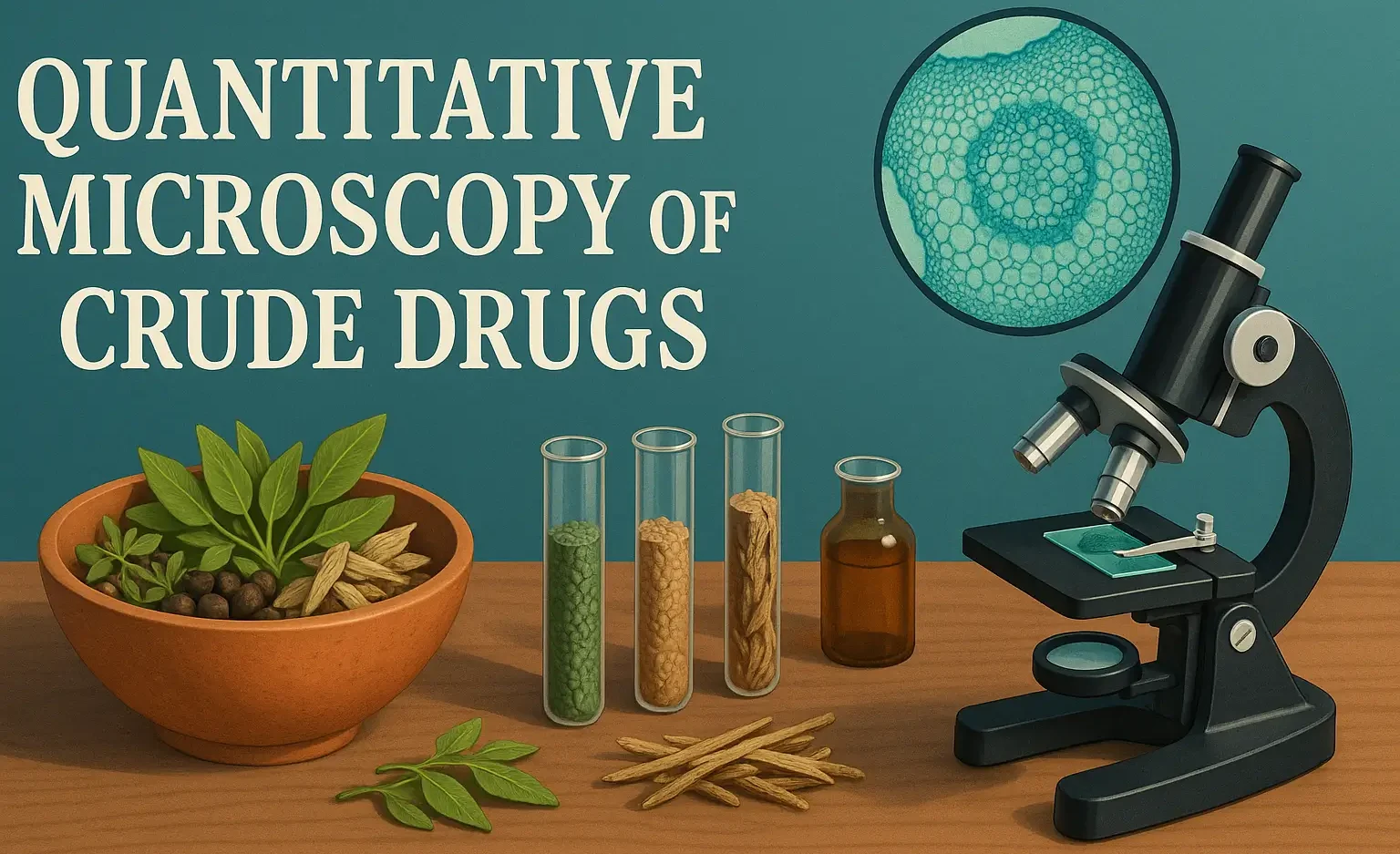- Quantitative microscopy of Crude Drugs involves the precise measurement and analysis of microscopic features in crude drugs (herbal medicines) to ensure authenticity, purity, and quality.
- This method provides numerical data for standardization and comparison, making it an essential tool in herbal drug evaluation.
- The main techniques in Quantitative microscopy of Crude Drugs include:
- Lycopodium Spore Method
- Leaf Constants
- Camera Lucida
- Diagrams of Microscopic Objects to Scale with Camera
1. Lycopodium Spore Method
Purpose:
- The Lycopodium spore method is used to estimate the quantity of powdered crude drug present in a sample.
How It Works:
- Standardization: A known number of Lycopodium spores (usually 10,000 spores) are mixed with a weighed sample of crude drug powder.
- Microscopic Counting: A specific volume of the mixture is examined under a microscope, and the number of drug particles per Lycopodium spore is counted.
- Calculation: Using the known quantity of spores, the actual amount of crude drug in the sample can be determined by applying the observed ratio.
Advertisements
Advantages:
- Provides an accurate estimate of crude drug quantity.
- Useful for standardizing herbal formulations.
2. Leaf Constants
Purpose:
- Leaf constants are quantitative parameters used to describe specific microscopic features of plant leaves.
- These parameters help in the identification and standardization of crude drugs.
Common Leaf Constants:
| Leaf Constant | Description |
| Palisade Ratio | The ratio of palisade cells to spongy cells in the leaf. |
| Stomatal Index | The percentage of stomata relative to total epidermal cells. |
| Vein-Islet Number | The number of vein-islets per unit area of a leaf. |
| Trichome Density | The number of trichomes (hair-like structures) per unit area. |
Application:
- Identification: Differentiates between similar species by comparing their leaf constants.
- Quality Control: Ensures consistency in herbal products by maintaining specific microscopic characteristics.
3. Camera Lucida
Purpose:
- A camera lucida is a drawing aid used to create accurate and scaled diagrams of microscopic objects observed in crude drugs.
Advertisements
How It Works:
- Device Setup: A camera lucida is attached to the microscope, projecting a translucent image of the specimen onto a drawing surface.
- Tracing: The observer can simultaneously see the specimen and the projected image, allowing for precise tracing.
- Diagram Creation: The microscopic structures are accurately drawn to scale.
Benefits:
- Enhances the accuracy of scientific drawings.
- Aids in documenting and communicating microscopic features for identification and analysis.
4. Diagrams of Microscopic Objects to Scale with Camera
Purpose:
- Creating scaled diagrams of microscopic objects ensures that illustrations accurately represent the size and proportion of structures observed in crude drugs.
Advertisements
Process:
- Observation: Examine the crude drug sample under a microscope with a calibrated eyepiece (micrometer).
- Measurement: Measure key dimensions of microscopic features (e.g., cell size, spore dimensions).
- Drawing: Use tools like camera lucida to create detailed scaled diagrams.
Advantages:
- Provides a visual and measurable representation of microscopic characteristics.
- Facilitates comparison between different samples and species.
- Aids in identification and standardization by providing reference diagrams.

